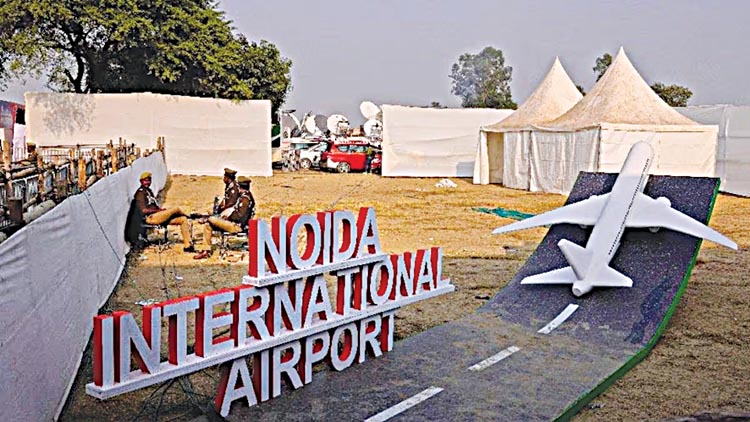Noida International Airport (NIA), the dream project of Uttar Pradesh Chief Minister Yogi Adityanath, on Wednesday unveiled its International Air Transport Association (IATA) code as DXN. The Chief Executive Officer (CEO) of Noida International Airport, Christoph Schnellmann, said, “As one of the world’s largest urban agglomerations, India’s National Capital Region deserves a second airport. Noida International Airport will turn this long-standing dream into reality and we are excited to earn our three-letter IATA code, which is a significant milestone in airport operation. We look forward to welcoming passengers, customers and partners to the region’s new economic and cultural hub.” DXN is set to become the official IATA location identifier or three-letter code for Noida International Airport. This assignment brings Noida International Airport closer to its customers, enabling them to recognise the airport on various platforms.
Once the airport commences operations, this code will be activated, facilitating swift and precise identification and communication of destinations for passengers and aviation experts, thereby preventing confusion and errors. It may be noted that Noida International Airport, also known as Jewar Airport is getting ready to operate with a commitment to minimal environmental impact through modern and user-friendly design as well as confluence of Indian culture and hospitality with Swiss technology and efficiency. COO Kiran Jain said that Noida International Airport’s code is DXN. “The airport will now be known worldwide by this code. It is a unique code, which means that whenever you book a ticket, you will be identified by DXN. This code can only be used by us and it will never change. In a way, it will be our PIN code”, she said. The IATA code is unique for each airport and serves as an identifier for airports globally in cases of ambiguity between countries and cities. These codes are not only recorded on the passengers’ travel documents, but also serve as an important element in various other communications on a daily basis.
From managing flight schedules, ticketing, handling baggage from one airport to another, to streamlining and regulating communications, operations and logistics the IATA codes help maintain the identification of an airport at every level in an organised and standardised manner. The construction of the airport is progressing rapidly. It has been more than a year since the EPC construction contract was awarded to Tata Projects. Currently work is being done on the structural steel required for the roof of the passenger terminal. The ATC tower now stands at a height of more than 30 meters.

